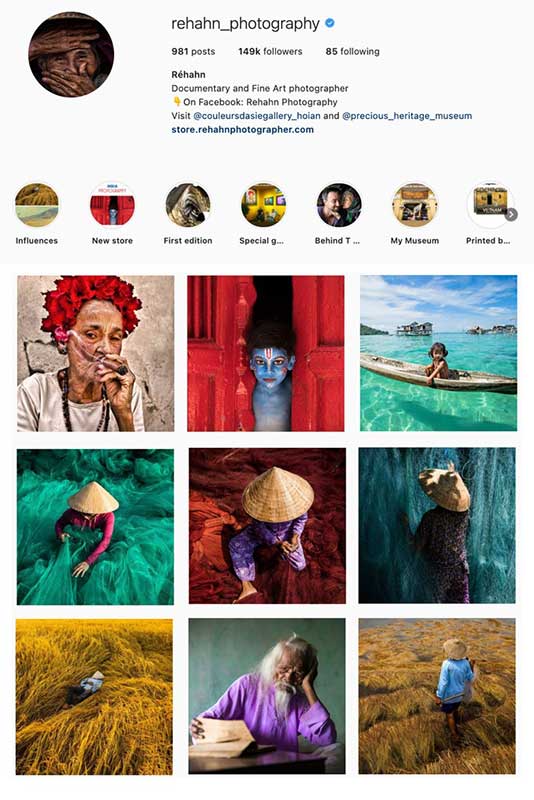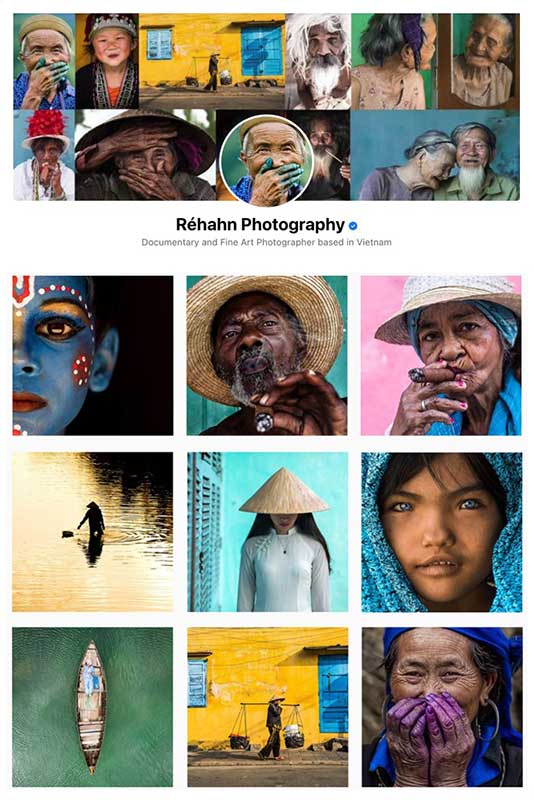Vietnam’s mesmerizing rice fields are an integral part of the country’s cultural and artistic heritage. Visitors come from around the world to see their otherworldly terraces, golden tones, and cycles of harvest and rebirth.
Yet, these fields represent more than just the bounty of the harvest – they also illustrate the long-standing tradition of pastoral subjects within the realm of Fine Art. The idyllic rice farming regions in Vietnam have left their mark in the art world, repeatedly inspiring Réhahn’s photographs.
Follow along to learn more about the beauty and serenity of Vietnam’s rice fields, as well as behind-the-scenes details about some of the French artist’s most iconic photos.
A Celebration of Rural Life
As the sun rises or sets, vast expanses of vibrant green or burnished gold fields create a picturesque scene, captivating both locals and tourists alike. The reflection of the clear blue sky in the shimmer of the flooded fields adds to the ethereal beauty of the paddies, providing an infinite palette of colors and moods.
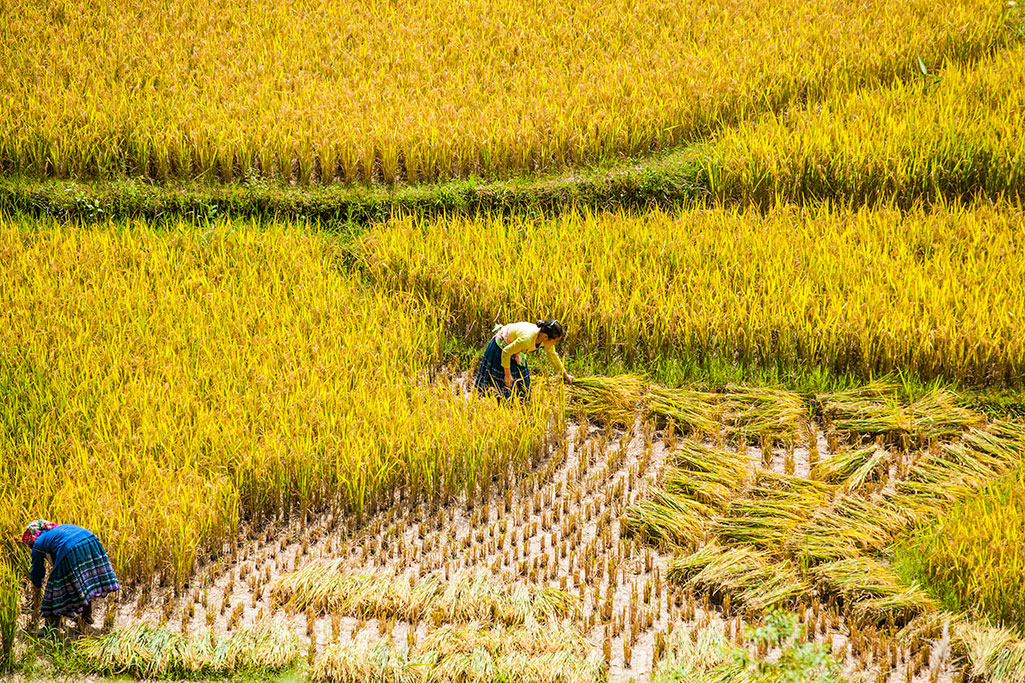
This interplay between color and light is part of what drew Réhahn to Hoi An and what continues to inspire him to wake before the sun’s first rays hit the sky and to capture the changing tones of the fields “en plein air.”
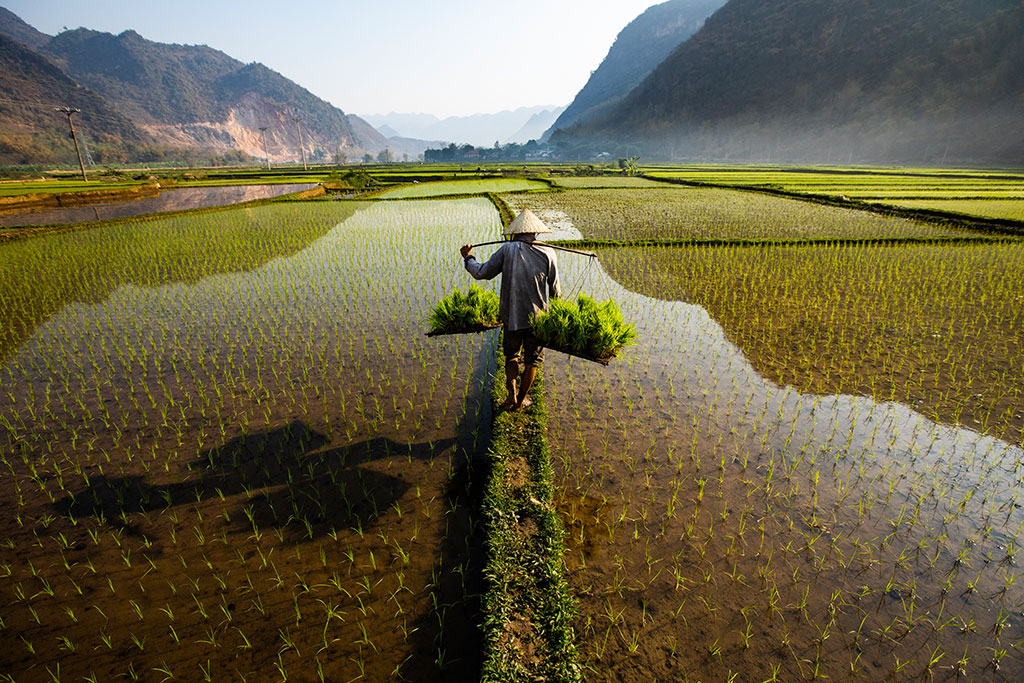
For centuries, artists have been drawn to the charm of rural life and have captured its essence in fine art. Pastoral artwork celebrates the harmony between humans and nature, focusing on idyllic scenes of farmers tending to their rice crops, water buffaloes grazing peacefully, and simple homes dotting the landscape.
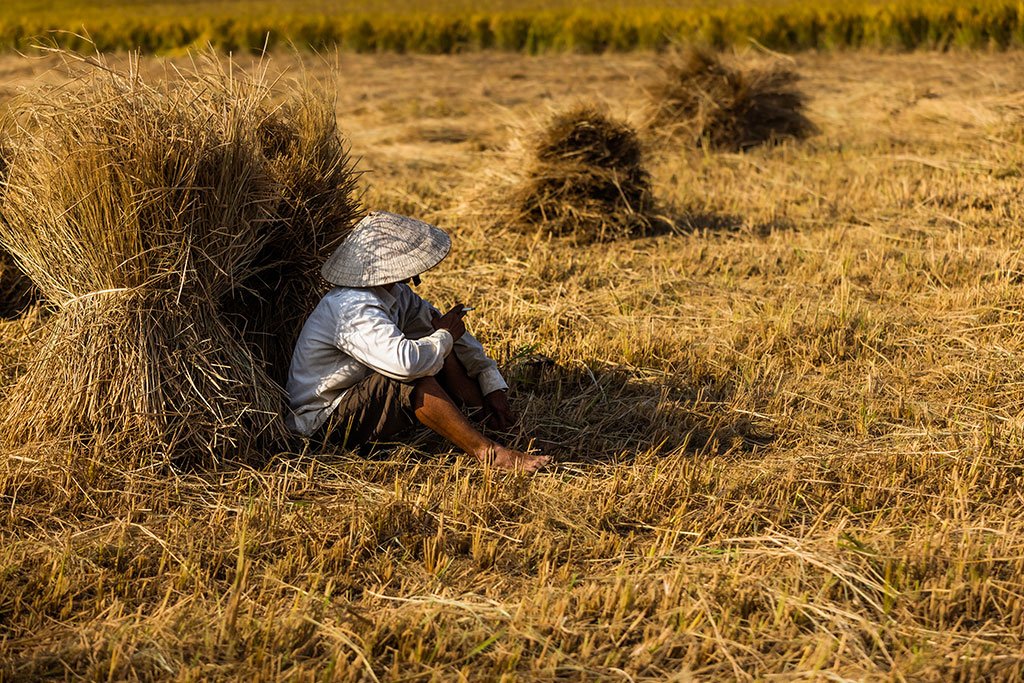
The Impressionists, such as Claude Monet, Camille Pissarro, and Pierre Bonnard, all sought to capture the changing seasons within the agricultural areas within France. They often painted wheat fields with loose brushstrokes to represent the movement of the crops and the light.
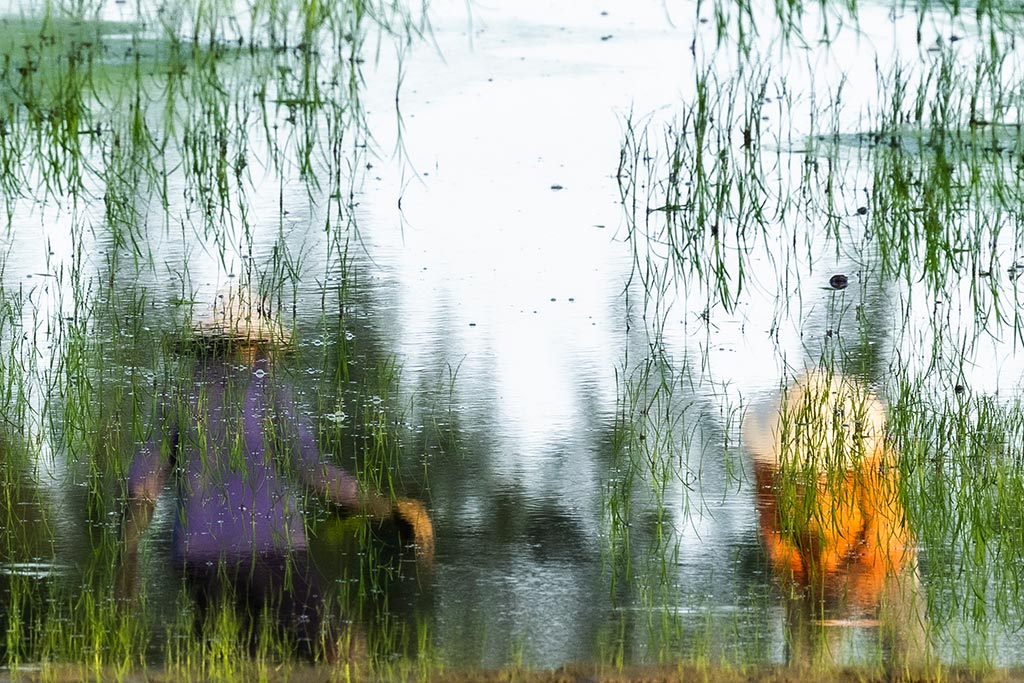
Vietnam’s strong artisanal farming traditions and the tranquil nature of the rice fields lends themselves well to this genre, allowing the artist to convey a sense of peace, abstraction, and artistic context through his artwork.
The Serenity of Rice Fields in Fine Art
Serenity is a prevalent theme in art, and Hoi An’s countryside offers a perfect embodiment of this concept. In Réhahn’s photos, the rice paddies represent the cycle of life – from the first shoots of rice stalks breaking through the soil to the harvest, to the flames used to burn the fields to replenish the earth.
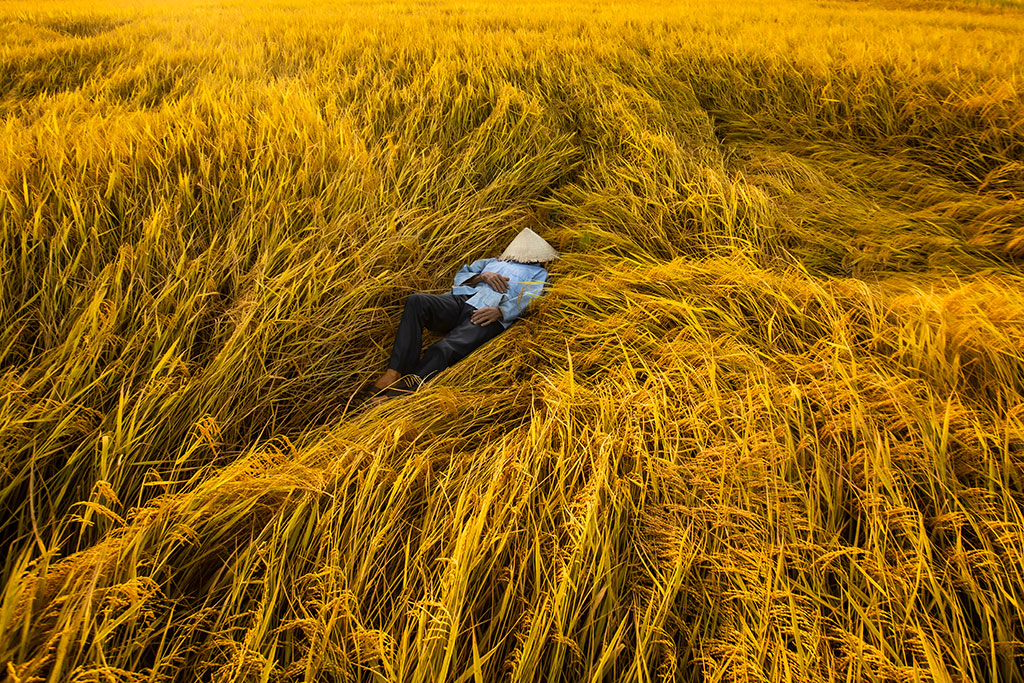
These different cycles also lend artistry to the photos, creating abstractions of forms and subjects. Réhahn uses an innovative technique to transform the scenes into photos that appear to be paintings. Shot through the heat shimmer created as the fields burn, the farmers appear to be painted into the scene with the use of soft brush strokes. The colors seen through the smoke and smudged lines become slightly muted in contrast to the bright tones of the natural world.
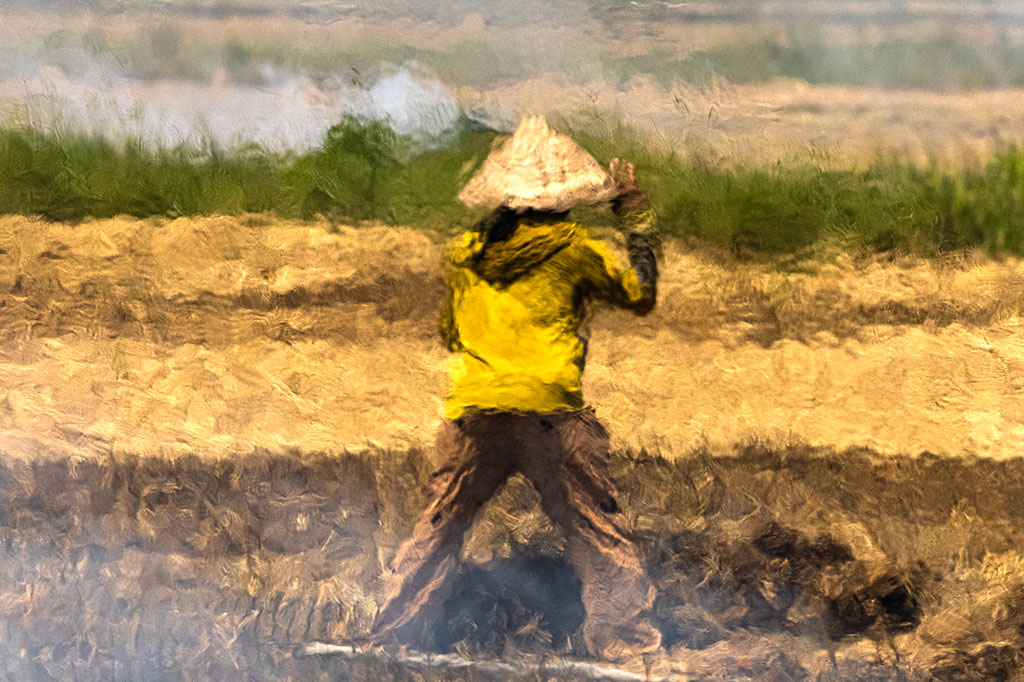
The Colors of the Countryside in Art
The colors of the Vietnamese countryside, especially in the rice fields, are nothing short of awe-inspiring. From the vivid green of the rice plants to the golden hues of the ripening crop, and the blue skies reflecting in the water, the palette is a symphony of nature’s finest colors. Through the ages, artists have skillfully harnessed these shades, using various techniques to convey the vibrancy and tranquility of the rural landscape.
Van Gogh often returned to his favorite palette of blue and yellow. Depending on the work, he utilized sky blue and goldenrod yellow, or deep indigo and ocher to create different effects and moods.
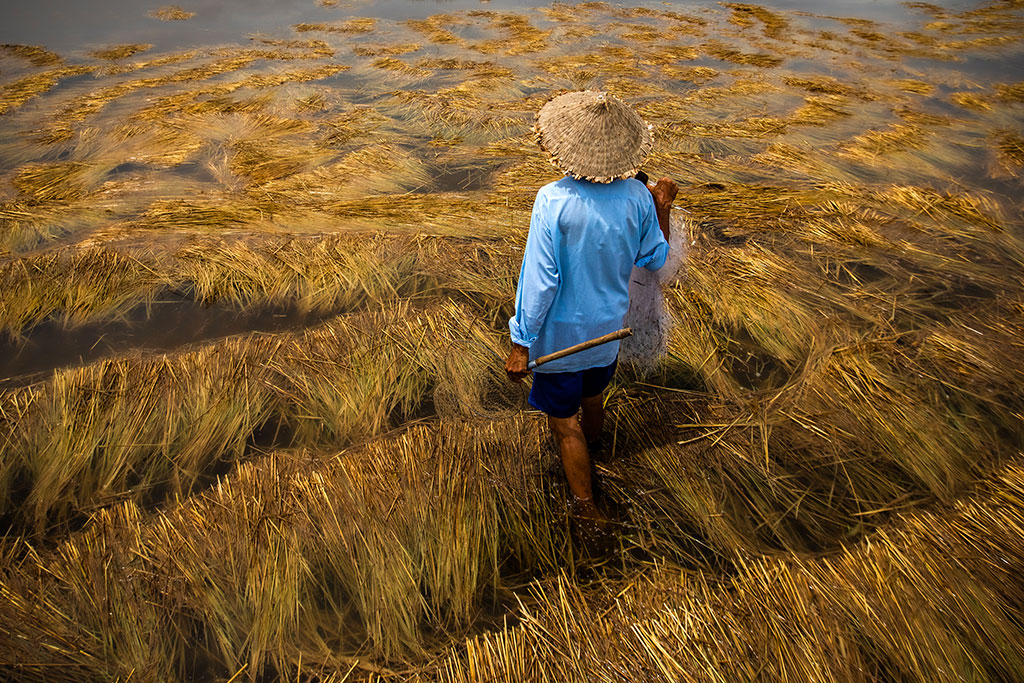
Cezanne often used a moodier palette. Deepening his yellows to burnt sienna and muddying his blues with touches of gray and vibrant green.
Pissarro tended to celebrate the colors of the countryside at their most vibrant, allowing the free brushstrokes to soften the colors as they blended.
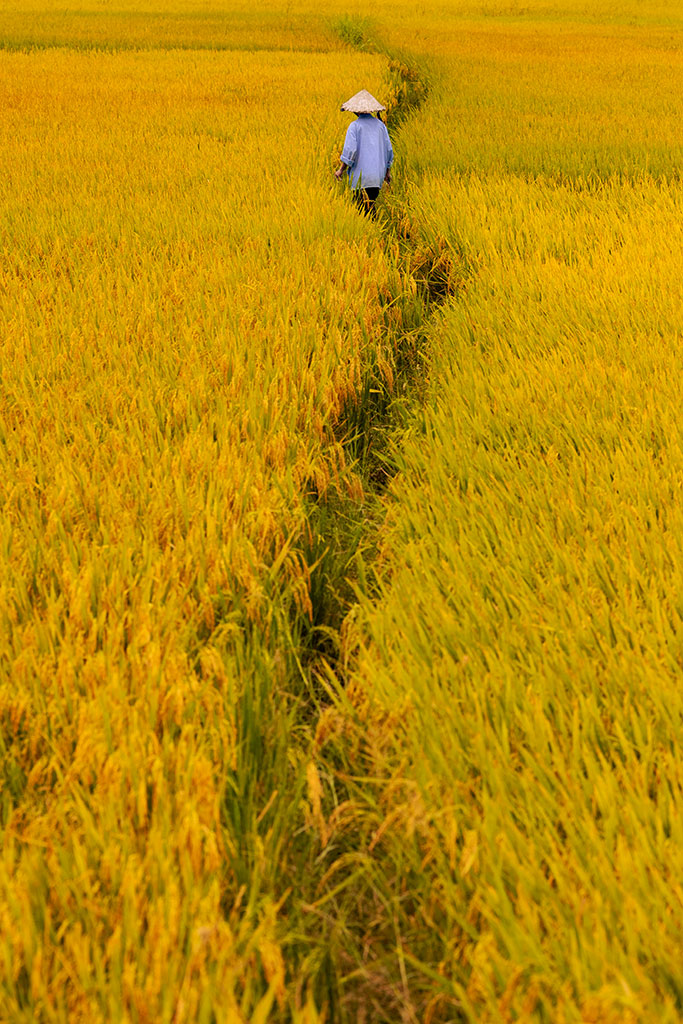
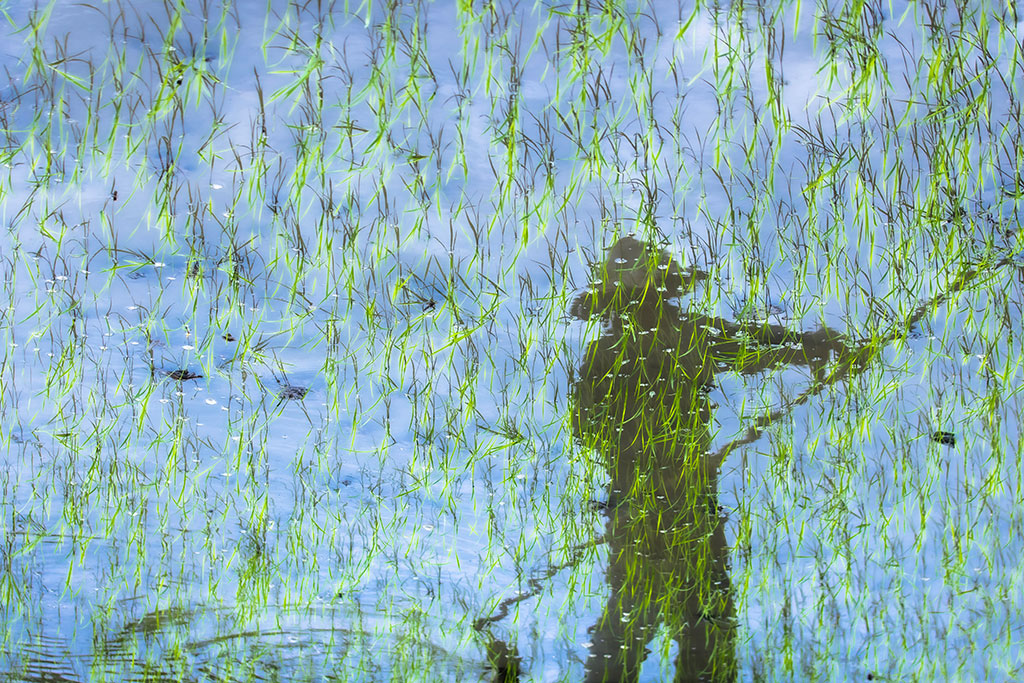
Réhahn’s rice field photographs span the whole painter’s palette – from vibrant sunrises or sunsets, to the deepened tones seen through smoke. His works are a gallery of the natural world.
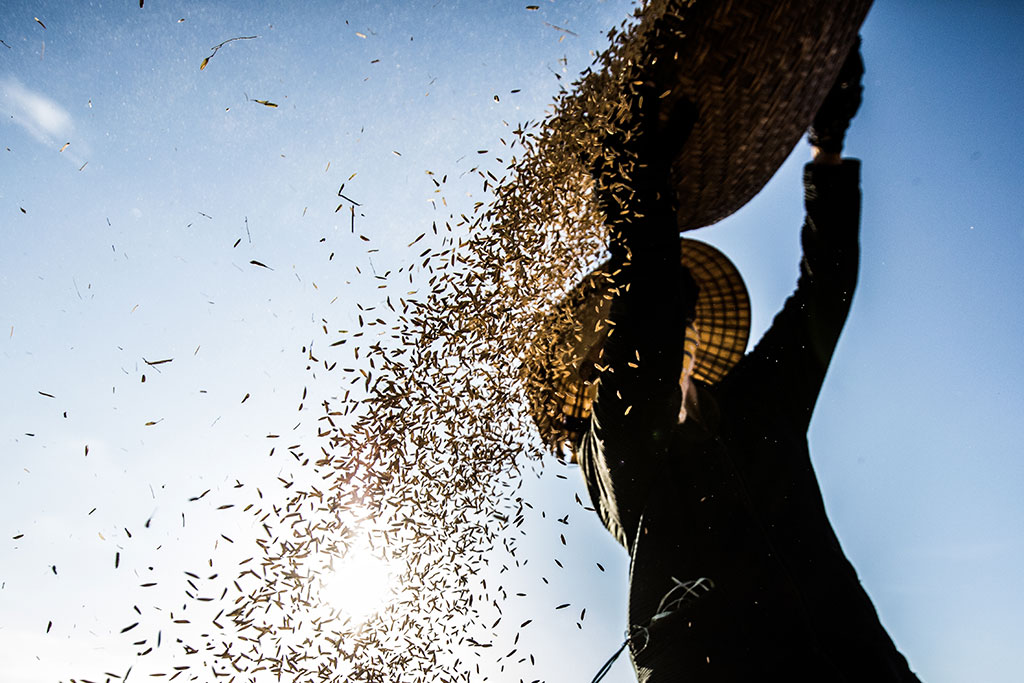
Ricefields in Hoi An, Sapa, and Beyond
Among the countless locations where ricefields grace the Vietnamese landscape, Hoi An, Sapa, and Mai Chau hold a special place in the hearts of artists and travelers.
Hoi An, a UNESCO World Heritage Site, is renowned for its well-preserved ancient town and surrounding picturesque rice paddies. Tourists flock to take in the beauty of traditional architecture and rural charm as well as to see the secrets of the harvest.
Mu Cang Chai offers an unparalleled experience of rural tranquility. Surrounded by lush greenery and towering limestone mountains, this region is a real-life canvas of majestic pastoral scenes.
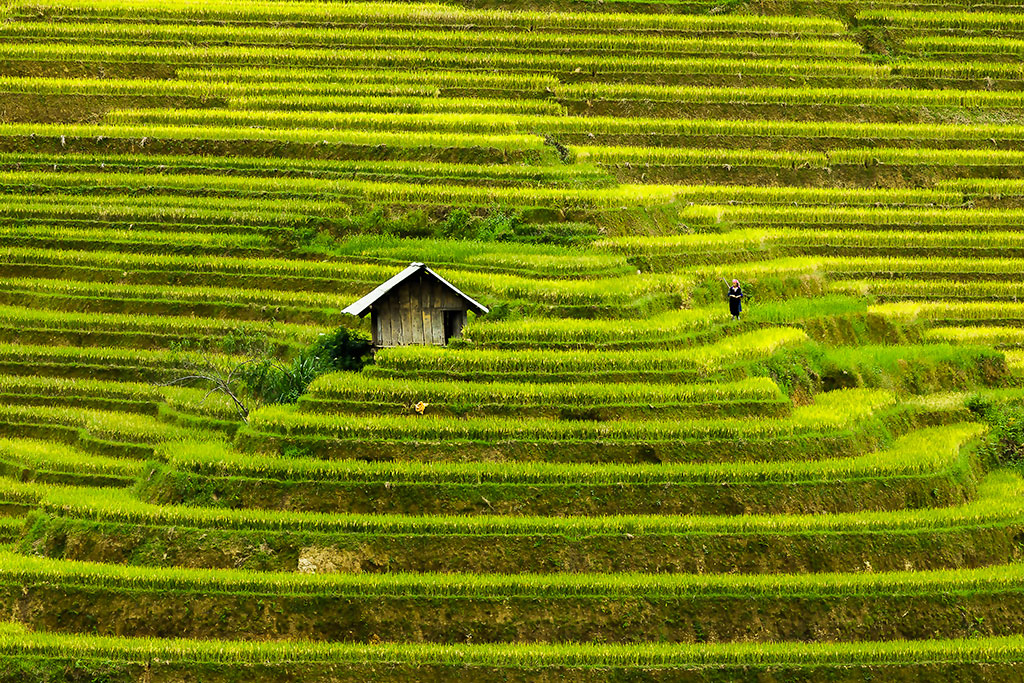
Sapa’s Rice Terraces are also a UNESCO World Heritage Site and one of the most stunning natural wonders in Southeast Asia. Believed to have been built more than 2000 years ago, the terraces cascade down the mountain slopes and are home to many of Vietnam’s more than 54 distinct ethnic groups.
The Enduring Legacy of Rice Fields in Vietnam
This artistic homage of Réhahn’s photographs not only celebrates Vietnam’s natural beauty but also serves as a reminder of the importance of preserving such landscapes and the people who live within them in the face of modernization. They stand as a testament to the harmonious relationship between man and nature.
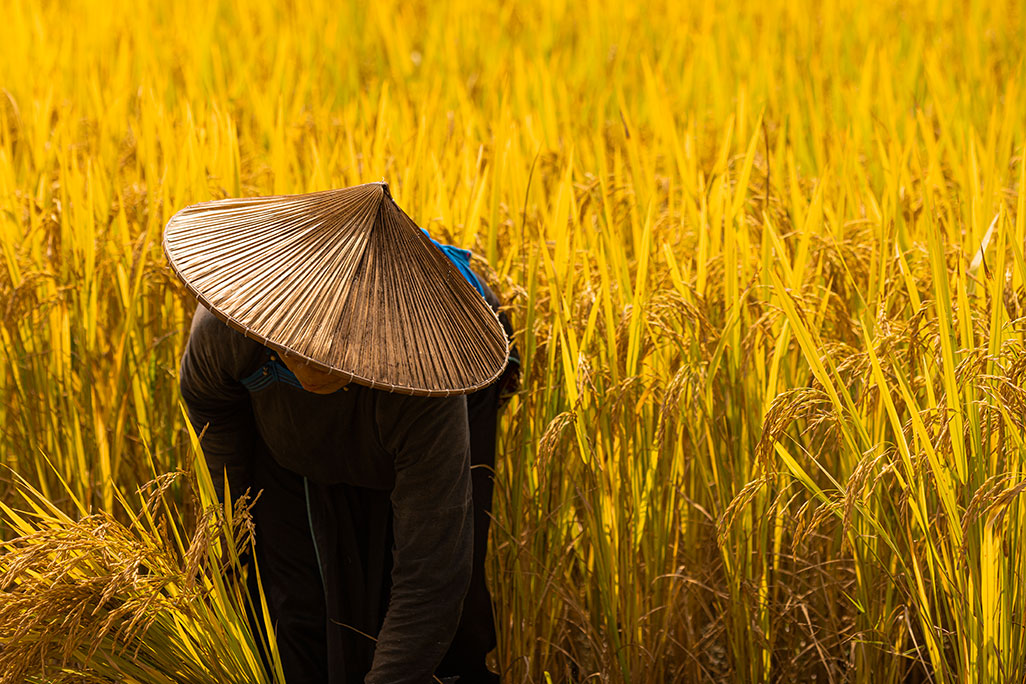
The colors of the countryside, particularly in locations like Hoi An, Sapa, and Mai Chau, have gifted the world with otherworldly beauty, inviting viewers to immerse themselves in the peace that these landscapes offer.
Through pastoral artwork in fine art, the serenity of natural landscapes has become immortalized, becoming a window into a softer time and place.
Where to find rice terraces in Vietnam ?
Sapa stands out unequivocally as one of Vietnam’s premier destinations for witnessing stunning rice terraces. Renowned for its breathtaking landscapes, this region is also rich in ethnic diversity, adding a fascinating cultural dimension to its allure. Despite its accessibility via a five-hour road trip from Hanoi, the influx of tourists and ensuing development have inevitably altered its charm.
An alternative is Mu Cang Chai, a place still accessible by motorbile or local bus. Count 6 to 8 hours. But it worth it!


